Colour Countdown
To celebrate the end of a dark and difficult year, we’re rejoicing in all things colourful! Join us on our journal blogs to discover how jellyfish see colour, why animals have iridescence, whether copycats actually catch out predators and much more!
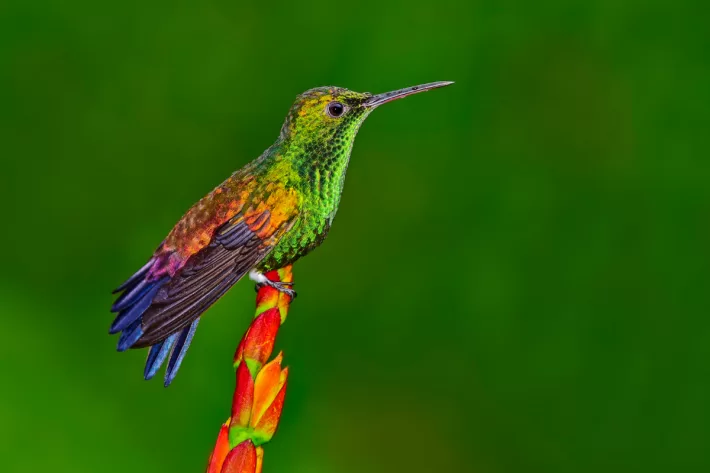
We are releasing one blog for each weekday of December from the 1st until the offices close on the 24th.
Make sure you don’t miss out on any of the action, follow our blogs here:
Happy holidays!
Day 1: Watch out! Colours can inform about animal defences
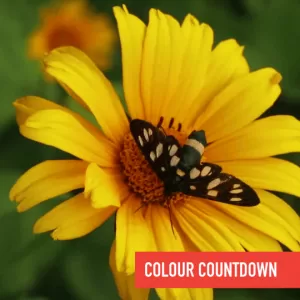
Ossi Nokelainen of Jyväskylä University sheds light on the evolutionary puzzle of conspicuous colouration and what it means for predators – and their preyRead more
Day 2: Can cephalopods see what fishes see?
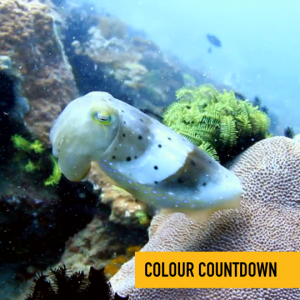
Wen-Sung Chung of the University of Queensland takes us on a deep dive into the complex and contradictory world of cephalopod vision and colour use. How are colour-blind animals able to display such a flamboyant variety of colours? Read on to find out
Day 3: Spider body coloration plays an important role in foraging and predator avoidance
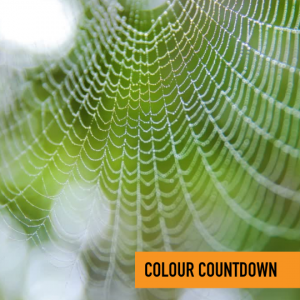
Shichang Zhang of Hubei University unravels the role of body coloration on prey capture and predator avoidance in spiders.
Day 4: How do birds see the world?
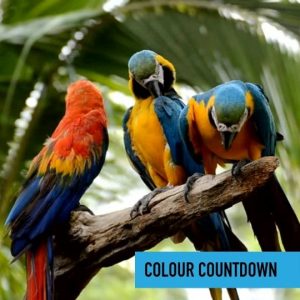
Almut Kelber Professor at Lund University, takes us on a sweeping tour of the complex array of bird vision – from chickens to owls – to unravel how their ecology affects the way they see the world.
Day 5: Insect mimicry, more than meets the eye
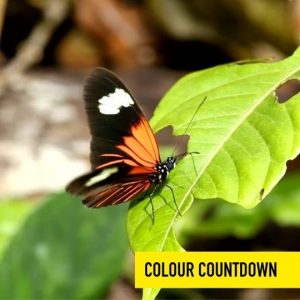
David Outomuro of University of Pittsburgh delves into the deceptive worlds of insect mimicry and explains why all may not be as it seems
Day 6: How and what do jellyfish see?
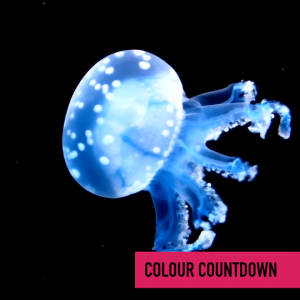
Aide Macias-Muñoz and Marina Stoilova of University of California Irvine take us on a journey to the depths of the jellyfish cells to help us understand what they are able to see and how colour plays a role in their ecology.
Day 7: Why are some mammals black and white?
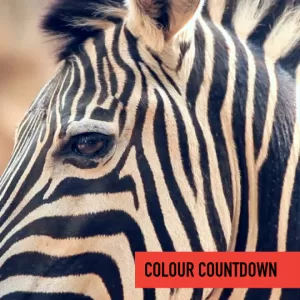
Natasha Howell of Bristol University unearths the mystery of striking colouration in mammals and what skunks and bees have in common.
Day 8: When animals wear iridescence

Laura Ospina-Rozo and Leslie Ng both of University of Melbourne decipher the confusing and dazzling world of animal iridescence and how it may not all be as it seems
Day 9: Cryptic floral colouration beyond human vision.
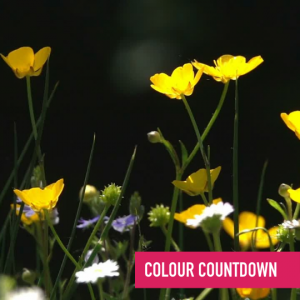
Caroline Dong of Tulane University unearths the diverse world of floral colouration and what we have yet to discover in these decorative but mysterious plants.
Day 10: Convergent optical illusions in colourful creatures
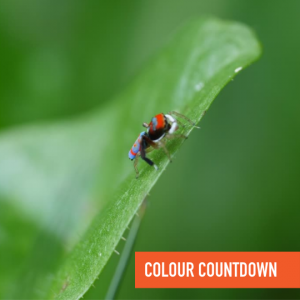
Dakota E. McCoy of Harvard University dazzles us with a tale of showy creatures and the complex world of ultra black colouration.
Day 11: Camouflage as a window on perception
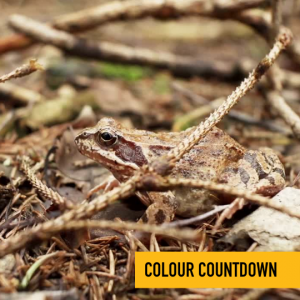
Innes Cuthill of University of Bristol takes us on a journey into the world of concealment and camouflage, how have these complex forms of disguise evolved, and what role does the viewer play?
Day 12: The colours out of (nano)space
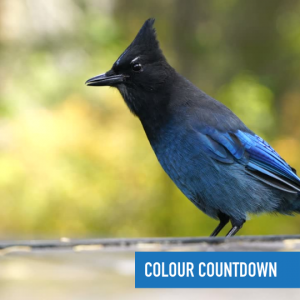
Natalia Cristina García of Cornell Lab or Ornithology takes us on a journey into space and into the centre of a feather to explain how ultra-reflective colours are created by nature.
Day 13: From blind amoeba to Nemo, the evolution of fish (and vertebrate) vision
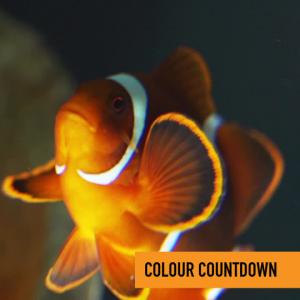
Martin Luehrmann of The University of Queensland takes us on a journey through the development of sight through the evolution of fish and early vertebrates.
Day 14: Can colours make animals warmer or cooler?
 Liliana D’Alba of Naturalis Biodiversity Center explores how feather colouration can affect bird’s body temperature and even make flying more efficient.
Liliana D’Alba of Naturalis Biodiversity Center explores how feather colouration can affect bird’s body temperature and even make flying more efficient.
Day 15: The hidden world of colours: a thermal story
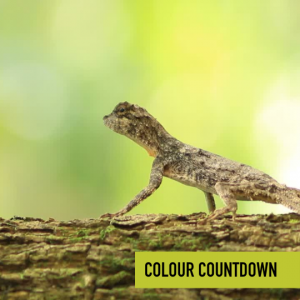 Johnathan Goldenberg of Ghent University unpicks the fascinating role of scale colouration in lizard temperature control and what this means under climate change.
Johnathan Goldenberg of Ghent University unpicks the fascinating role of scale colouration in lizard temperature control and what this means under climate change.
Day 16: Why are some plants and animals more colourful than others?
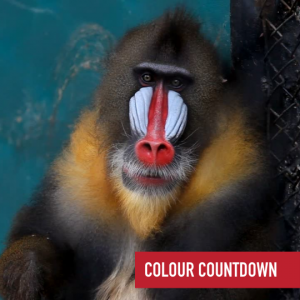 Matthew Shawkey of Ghent University paints a colourful picture of the range of colouration techniques created by the natural world, and how these inspire technological advances to create new and exciting materials.
Matthew Shawkey of Ghent University paints a colourful picture of the range of colouration techniques created by the natural world, and how these inspire technological advances to create new and exciting materials.
Day 17: Hiding in plain sight, a mystery of colour-changing ability in the green lynx spider
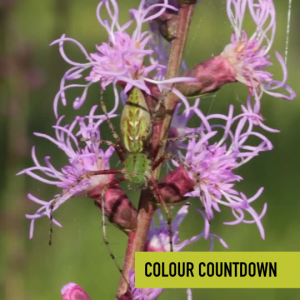 Dani Davis of Florida State University sheds light on the story behind her winning Capturing Ecology award photograph, and the complex and mysterious abilities of spider that acts like a cat.
Dani Davis of Florida State University sheds light on the story behind her winning Capturing Ecology award photograph, and the complex and mysterious abilities of spider that acts like a cat.
Day 18: Identifying species by appearance
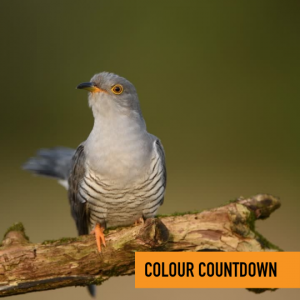 Héloïse Brown and Will Allen of Swansea University discuss research on species recognition signalling across the animal kingdom and explore what this can tell us about Homo sapiens’ interactions with other lineages of archaic human.
Héloïse Brown and Will Allen of Swansea University discuss research on species recognition signalling across the animal kingdom and explore what this can tell us about Homo sapiens’ interactions with other lineages of archaic human.
Bonus day: Why is pink the colour of virgin birds?
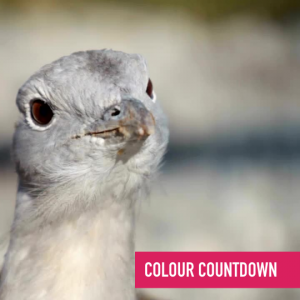 Ismael Galván of National Museum of Natural Sciences (Spain) uncovers to exciting role of porphyrin colouration and what it might mean in an ecological setting.
Ismael Galván of National Museum of Natural Sciences (Spain) uncovers to exciting role of porphyrin colouration and what it might mean in an ecological setting.
Like what we stand for?
Support our mission and help develop the next generation of ecologists by donating to the British Ecological Society.